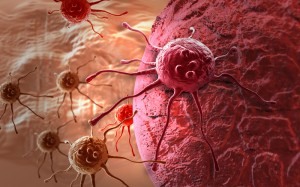The chances are that if you have found this website, you or someone close to you has cancer. That in itself is not surprising as the sad fact is 1 in 3 of us will develop cancer during our lifetime. This statistic has come up significantly in the last 20 years, meaning that the majority of us have to manage cancer in one form or the other at some point in our lives.
Our aim at The Specialist Health centre is to support patients through the process and educate / coach them into healthier lifestyles that will significantly reduce the chances of future relapse.
However before we start that process, it is fundamental that we start at the basics so all patients can understand what cancer is, how it is caused and how it develops. This will enable patients to have a clear understanding of why we employ our methods and increase the likelihood of them continuing our practices outside of the rehabilitation program.
There is many great sources of information out there, some provided directly by medical professionals, others supplied by charities and homeopathic practitioners. My advice is to try to educate yourself on as many areas as possible. That way you can make educated decisions and chose primary (or secondary) treatment pathways that have no ulterior motive other than your health. The simple act of empowering yourself in the decision process can have significant psychological benefits which in turn leads to physiological improvements. If you don’t believe me, ask your doctor to explain the effects of stress hormones and how they affect your body.
So lets start at the beginning. What is Cancer? (I apologise now for the constant use of the word cell, but it is near on impossible to describe this process without it being used continuously!) “Cancer” is the term used to describe a mass of abnormal cells that can develop in any area of the body. These abnormal cells start off as regular “normal” cells, however for multiple reasons they can mutate and become different to the others surrounding them. Once they start to look different from the cell of origin, they become aggressive and replicate at a much faster rate.Whereas regular cells replicate at a regulated speed and die after a reasonable time; (this process is called apoptosis) cancer cells immortalise and start their journey into becoming a tumour. As they continue to grow (without dying), they inevitably start to build on top of each other and take larger amounts of space which in turn out strips their blood supply. (Our cell health relies on a continuous supply of oxygenated blood in order for them to function properly.)
When a collection of cells become detached from their fuel source (the blood stream) the cells start to secrete chemicals which cause new blood vessels to grow and feed them. This stage is called angiogenesis.
Angiogenesis is a crucial part of our body’s development. When done correctly, angiogenesis heals the body by creating intelligent blood vessels or capillaries under injuries or for example in the uterus during the menstrual cycle.
However it is when angiogenesis is out of balance that we see diseases occur. For example it is believed that we have 40,000 cancerous cells in our body on a daily basis, however a correct balance of angiogenesis is kept and therefore the cancer cells essentially starve to death. There are many different kinds of fruits and vegetables that can help maintain this balance and have even been proven to work better than the anti-angiogenic drugs. (to learn more about these foods follow this link)
So our cells are now at a stage that they have collected together and created a new fuel source for themselves. As they continue to replicate they invade surroundings areas of tissue causing damage. This can cause internal blockages which produce related symptoms or pain if the tumour invades muscles and nerves.
At this stage of the process the tumour is still at its point of origin and has not spread to other areas of the body (just the local surrounding tissue). This is referred to as a benign tumour and in many cases can be treated successfully.
However if the tumour has grown to a size that it runs out of room, it releases part of itself so that it can grow in different areas of the body. This process is called metastasis or sometimes referred to as secondary deposits.
Tumors which can invade and metastasis (spread to other areas of the body) are called malignant tumors.
Malignant tumours are harder to treat because of the aggression in which they spread. However treatments are continuously being developed to fight this horrid disease and thankfully the mortality rate is constantly declining.
Hopefully you now have an understanding of what cancer is. In the next coming blog instalments we will look at what causes cancer and how patients can empower themselves during their treatment.
Mike Jefferson
Exercise Referral Specialist – Cancer Rehab
www.specialisthealthcentre.co.uk





